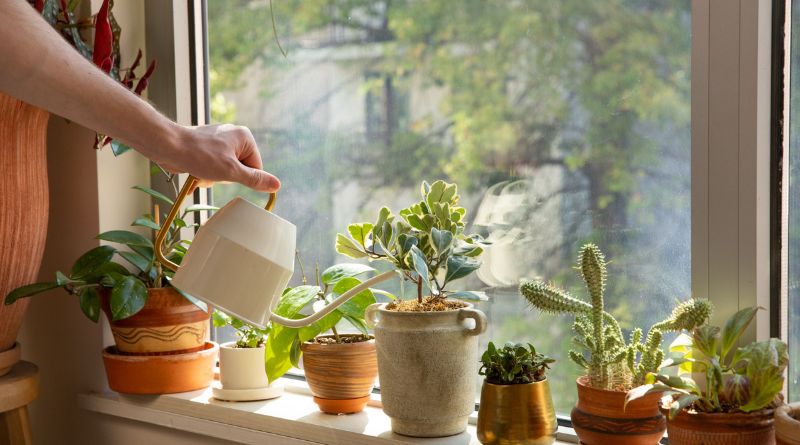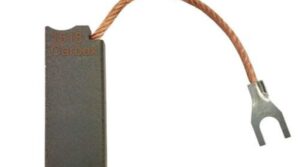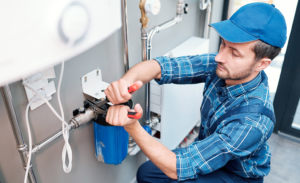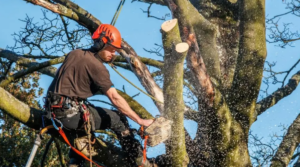
Watering your containers properly is crucial so they can perform at their best. Once you get some experience, knowing when and how much water becomes almost second nature. Initially, figuring out how to keep your plants happy can be a real struggle. Over-watering is generally considered the most common cause of early plant death. By following these guidelines, 90% of plants will be happy.
What you need to know
Drainage holes are essential in pots
Ensure there is at least one drainage hole in the bottom of the pot if you are planting in a pot. Healthy roots are essential for healthy plants. Pots without adequate drainage can quickly become overwatered.
Soil should only be watered when it is dry on top
You should check your plants first to see if they need water instead of watering on a set schedule. If your plant is in a pot, look at the soil’s surface or touch it to determine if it requires water. Wet soil will appear in darker hues, whereas dry soil will show in lighter shades. Peat-based soil mixes, the most common type, are dark brown to black when wet, while brown to ‘paper bag’ is dry.
Water your plants if the soil surface feels dry or looks like that. If you have outdoor plants, you should check them twice a day for water. Remember that just because one pot needs water doesn’t mean all of them do. The size of the pot and how much water it holds will affect how quickly a pot dries.
Drainage holes should be filled with water until the water comes out of them.
Water your plants thoroughly until they have filled with water, and it comes out of the drainage hole at the bottom of the pot. It can take up to a gallon of water to thoroughly water a container of 10 to 12 inches in size. Plants that receive a cup of kindness are likelier to die than those that receive a good long drink. Roots seldom form in the bottom two-thirds of their container when they receive a cup of water frequently. Dehydration can easily cause the plant to wilt and lose its life if its daily cup of water is unavailable.
Watering the entire root zone is essential for two reasons. You will encourage roots to grow to the bottom of the container, which means happier plants. You might also need to water less frequently.
Standing water should not be allowed to accumulate in your pot
Pots should not be kept in water. Standing in water keeps the soil in the pot too wet, preventing excess water from draining.
The foliage of your plants should not be drenched at night. They tend to stay wet all night if you water late in the day. Wet foliage at night makes an ideal breeding ground for diseases. You can wait until the morning to water if your plant isn’t wilting and it’s after 6:30 p.m. If your plant has wilted, water that evening, as its need for water is more significant than its chance of contracting a disease.
Seasons and weather matter
You may not have to water your container as often in the spring when your plants are smaller, and the temperature is lower. When the plants grow larger and the mercury rises, be prepared to water daily. If you have small pots or water “pigs,” you might have to do it twice a day. In windy weather, you will need to water your pots more often. Hanging baskets, in particular, dry out more quickly when you have wind.
Use larger pots if you need to water less frequently. Larger pots hold more soil volume, which means more water in the pot. More water in the pot means less watering.
You can add additives if you want the soil to retain more moisture. Do not learn that overwatering is not the best practice during long dry summers. If you incorporate these additives, ensure you don’t overwater in spring when the pots dry out less quickly.
Watering practices
It may take more than standard watering practices to hydrate a plant that has dried to the point where it is wilting. If potting mixes get too dry, they can become almost water-repellent. It may be necessary to rehydrate the soil if you water your plant, and it seems that all of the water runs down between the sides of the pot and the soil ball. Soak your pot in water for at least 2 hours or until the soil has expanded and no longer pulls away from the edge of the pot. Once the soil has expanded, continue to water your pot as usual.
Watering repeatedly can also be used to rehydrate your pot or basket if it is impractical to soak it in water. When you do this, you will probably see most of the water running around the soil rather than soaking into it. Water again after 30 minutes to an hour. It will look like more water is soaking in. When the soil is fully hydrated after three waterings, it should be able to take up water as standard by the third watering.
Despite not getting much water into the soil, the first watering moistens the surface. In the subsequent waterings, the water penetrates the soil ball and moistens the basket. Waiting between waterings allows the water you have already added to soak into the soil and makes the soil less water-repellant.
Generally, plants do best when fertilised every 7 to 10 days with a water-soluble fertiliser or regularly with a controlled-release fertiliser.
Conclusion
It is ideal to follow most plants’ watering guidelines described above.
In some cases, plants may prefer to be kept drier than this (cacti, succulents, etc.) or wetter than this (Juncus (Rushes), Papyrus, Acorus, Elephant Ears (Alocasia, Colocasia)). However, these guidelines are generally appropriate for most plants. Given that we have all been there, failing at plant parenting, consider consulting with a garden maintenance professional the next time you see you are almost killing the next one.







